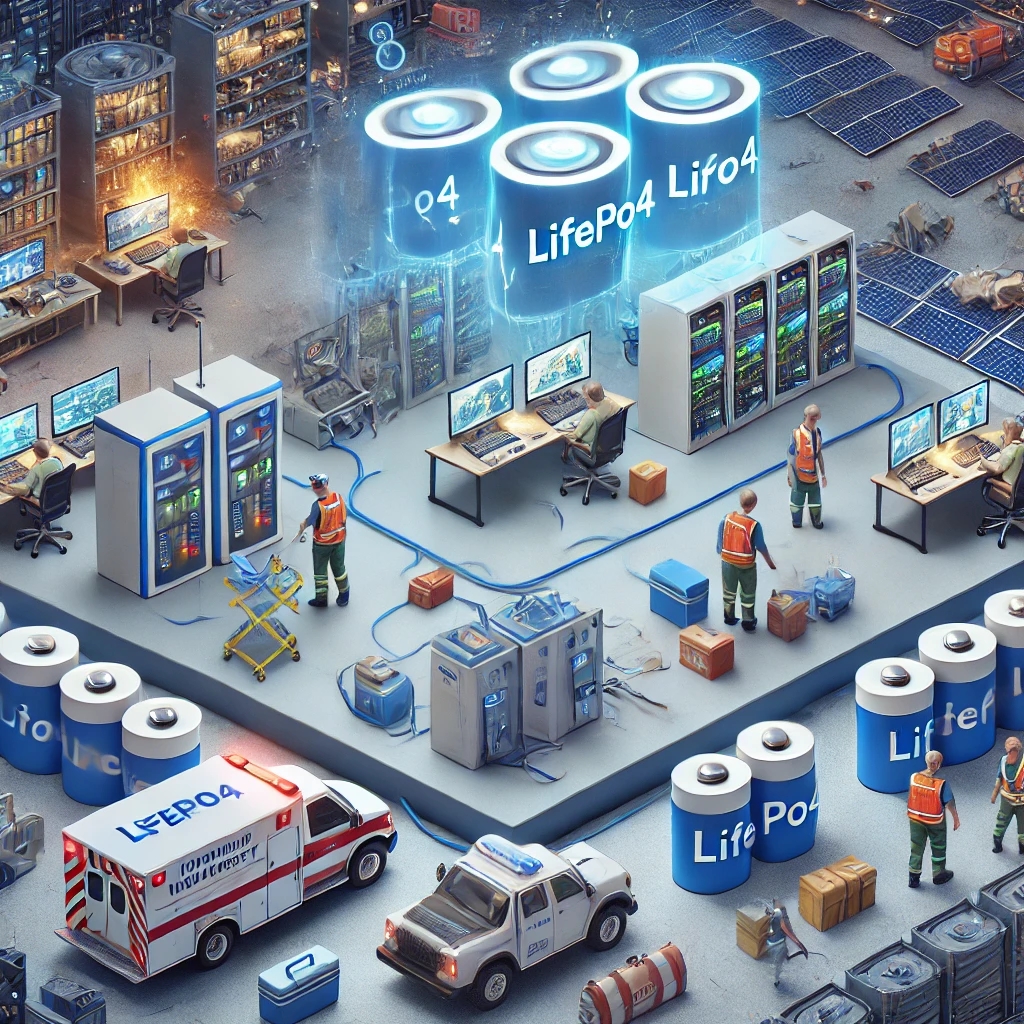LiFePO4 Batteries: Powering Disaster Recovery and Relief Efforts
LiFePO4 Batteries: Powering Disaster Recovery and Relief Efforts
After a natural disaster, rapid and reliable power is essential for coordinating recovery efforts. LiFePO4 batteries have emerged as a vital component in disaster recovery, providing a reliable energy source for emergency operations centers, medical facilities, and other critical infrastructures. Their high energy density, safety, and long life make them the perfect solution for supporting disaster recovery operations.
1. Powering Emergency Operations Centers
In the aftermath of a disaster, emergency operations centers (EOCs) play a crucial role in coordinating relief efforts. LiFePO4 batteries are often used to power these centers, ensuring that vital communication equipment, computers, and other emergency systems remain operational. With their ability to supply steady, long-lasting power, these batteries ensure that emergency responders can continue their efforts without worrying about power outages.
By incorporating Disaster-resistant LiFePO4 batteries, EOCs can rely on a sustainable energy source that supports ongoing operations during power grid failures or infrastructure damage caused by the disaster. These batteries also provide the necessary power to manage logistics, deploy resources, and communicate with affected populations.
2. Medical Power Backup in Disaster Recovery
In disaster recovery situations, medical facilities and field hospitals often need backup power to operate critical equipment such as ventilators, oxygen concentrators, and monitoring devices. LiFePO4 batteries are ideal for these applications due to their high discharge rates and long cycle life. They can provide a reliable power source for medical equipment in areas where the electrical grid has been damaged or is non-functional.
Using LiFePO4 batteries for disaster recovery in medical settings ensures that patients receive uninterrupted care during critical moments. These batteries are especially useful in mobile medical units that are deployed to disaster zones, where energy independence is crucial.
3. Supporting Communication Systems
In the wake of a disaster, reliable communication is vital for coordinating rescue and recovery efforts. LiFePO4 batteries play a crucial role in powering communication systems, ensuring that emergency responders can stay in contact and share information effectively. Whether it's satellite phones, radios, or other communication devices, these batteries provide the energy needed to keep communication lines open during emergencies.
LiFePO4’s long-lasting performance makes them the perfect choice for powering communication equipment for extended periods, ensuring that critical communication remains functional even when power sources are scarce.
4. Energy Storage for Disaster Recovery Centers
LiFePO4 batteries are also used in disaster recovery centers, where they store energy for use in recovery operations. These centers often rely on a mix of renewable energy sources like solar or wind power, and LiFePO4 batteries provide an efficient way to store this energy for later use. By integrating LiFePO4 batteries into recovery center energy systems, these centers can maintain a stable energy supply, ensuring that relief efforts can continue without interruption.
These batteries provide power to essential equipment, lights, and computers in disaster recovery centers, allowing relief agencies to organize and coordinate their efforts to support affected communities.
5. Quick Deployment in Disaster Situations
One of the most significant advantages of LiFePO4 batteries is their quick deployment in disaster situations. These batteries can be integrated into portable power systems that are rapidly deployed to affected areas, providing an immediate power source when the grid is down. Whether used in mobile power stations, temporary shelters, or emergency response units, LiFePO4 batteries ensure that emergency teams can start working without delay.
These portable power systems can supply energy to lights, water pumps, refrigeration, and other essential systems, providing relief to those affected by disasters and helping with the recovery process.
6. Long-Term Disaster Recovery Power Solutions
LiFePO4 batteries provide a long-term power solution for disaster recovery. Unlike traditional batteries, which may degrade after a few cycles, LiFePO4 batteries maintain their efficiency and performance over many years, making them ideal for long-term recovery operations. These batteries can be used to support critical infrastructure for extended periods, ensuring that recovery efforts continue without power interruptions.
By using LiFePO4 for natural disaster preparedness, recovery centers and emergency operations teams can be ready for future disasters, knowing that they have a reliable, sustainable power source.
Conclusion
LiFePO4 batteries are transforming disaster recovery by providing reliable, long-lasting, and sustainable power solutions for emergency operations centers, medical facilities, communication systems, and disaster recovery centers. Their efficiency and safety make them the ideal choice for powering critical systems during and after a disaster, ensuring that recovery efforts are swift and effective.
For reliable energy storage solutions during disaster recovery, consider Yabopower's line of LiFePO4-powered products, designed to meet the needs of emergency responders and recovery teams in disaster-prone areas.
READ MORE:
LiFePO4 Batteries: Enabling Renewable Energy Solutions in Disaster Recovery
LiFePO4 Batteries: Powering Field Hospitals in Disaster Recovery
LiFePO4 Batteries: Empowering Portable Power Stations in Disaster Situations
LiFePO4 Batteries: Enabling Off-Grid Living and Energy Independence
LiFePO4 Batteries: Ideal Applications and Devices for Various Scenarios











